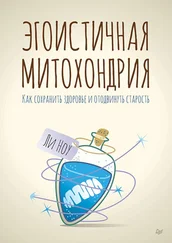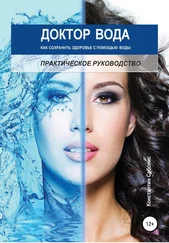Milani, M. et al. ‘Ei cacy of a Photolyase-Based Device in the Treatment of Cancerization Field in Patients with Actinic Keratosis and Non-Melanoma Skin Cancer.’ G Ital Dermatol Venereol (2013): 148: 693–698.
Rudolph, C. M. et al. ‘Squamous Epithelial Carcinoma in Erythema Ab Igne.’ Hautarzt (2000): 51: 260–263.
Kligman, L. ‘Intensification of Ultraviolet-Induced Dermal Damage by Infrared Radiation.’ Arch Dermatol Res (1982): 272: 229–238.
Schroeder, P. et al. ‘Infrared Radiation-Induced Matrix Metalloproteinase in Human Skin: Implications for Protection.’ J Invest Dermatol (2008): 2491–2497. https://www.ncbi.nlm.nih.gov/pubmed/18449210.
Vierkotter, A. et al. ‘MMP-1 and 3-Promoter Variants are Indicative of a Common Susceptibility for Skin and Lung Aging: Results from a Cohort of Elderly Women (SALIA).’ J Invest Dermatol (2015): 135: 1268–1274.
Farmer, P. B. et al. ‘Molecular Epidemiology Studies of Environmental Pollutants. Effects of Polycyclic Aromatic Hydrocarbons (PAHs) in Environmental Pollution on Exogenous and Oxidative DNA Damage.’ Mutat Res (2003): 544: 397–402.
Huls, A. et al. ‘Trai c-Related Air Pollution Contributes to Development of Facial Lentigines: Further Epidemiological Evidence from Caucasians and Asians.’ J of Invest Dermatol (2016): 136: 1053–1056.
Manning, W. J. et al. ‘Ozone and Levels in European and USA Cities are Increasing More Than at Rural Sites, While Peak Values are Decreasing.’ Environ Pollut (2014): 192: 295–299.
Valacchi, G. et al. ‘Vitamin C Compound Mixtures Prevent Ozone-Induced Oxidative Damage in Human Keratinocytes as Initial Assessment of Pollution Protection.’ PLoS ONE (2015).
Lai, D. et al. ‘Localization of HPV-18 E 2 at Mitochondrial Membranes Induces ROS Release and Modulates Host Cell Metabolism.’ PLoS One (2013): 8 (9): e75625. eCollection 2013: PMID:24086592: http://dx.doi.org/10.1371/journal.pone.0075625.
Prabhu, S. R. and Wilson, D. ‘Evidence of Epstein-Barr Virus Associated with Head and Neck Cancers: A Review.’ J Can Dent Assoc (2016): 82: g2: http://www.jcda.ca/g2.
Parkin, D. M. ‘The Global Health Burden of Infection-associated Cancers in the Year 2002.’ Int J Cancer (2006): 118 (12): 3030–3044.
Dreau, D. et al. ‘Human Papillomavirus in Melanoma Biopsy Specimens and Its Relation to Melanoma Progression.’ Ann Surg (2000): 231 (5): 664–671.
Godar, D. et al. ‘Cutaneous Malignant Melanoma Incidences Analyzed Worldwide by Sex, Age and Skin Type Over Personal Ultraviolet-B Dose Shows No Role for Sunburn but Implies One for Vitamin D 3.’ Dermato-Endocrinology (2017): Vol. 9, № 1: http://dx.doi.org/10.1080/19381980.2016.1267077.
Wertz, P. W. ‘Lipids and Barrier Function of the Skin.’ Acta Derm Venereol (2000): 208: 7–11.
Jackson, M. J. et al. ‘UVR-Induced Oxidative Stress in Human Skin in vivo: Efects of Oral Vitamin C Supplementation.’ Free Radic Biol Med (2002): 33: 1355–1362.
Telang, P. S. ‘Vitamin C in Dermatology.’ Indian Dermatol Online (2013): 4: 143–146.
Placzek, M. et al. ‘Ultraviolet B-Induced DNA Damage in Human Epidermis is Modified by the Antioxidants Ascorbic Acid and D-alpha-tocopherol.’ J Invest Dermatol (2005): 124: 304–307.
Pinnell, S. R. et al. ‘Topical L-ascorbic Acid: Percutaneous Absorption Studies.’ Dermatol Surg (2001): 27: 137–142.
Pinnell, S. R. et al. ‘UV Photoprotection by Combination Topical Antioxidants Vitamin C and Vitamin E.’ J Am Acad Dermatol (2003): 48: 866–874.
Pinnell, S. R. et al. ‘Protective Effects of a Topical Antioxidant Mixture Containing Vitamin C, Ferulic Acid and Phloretin Against Ultraviolet-Induced Photodamage in Human Skin’. J Cosmet Dermatol (2008): 7: 290–297.
Pinnell, S. R. et al. ‘A Topical Antioxidant Solution Containing Vitamins C and E Stabilized by Ferulic Acid Provides Protection for Human Skin Against Damage Caused by Ultraviolet Irradiation.’ J Am Acad Dermatol (2008): 59: 418–425.
Kligman, L. ‘Intensification of Ultraviolet-Induced Dermal Damage by Infrared Radiation.’ Arch Dermatol Res (1982): 272: 229–238.
Pinnell, S. R. et al. ‘Topical Vitamin C Protects Porcine Skin from Ultraviolet Radiation-Induced Damage.’ Br J Dermatol (1992): 127: 247–253.
Pinnell, S. R. et al. ‘Effects of Ascorbic Acid on Proliferation and Collagen Synthesis in Relation to the Donor Age of Human Dermal Fibroblasts.’ J Invest Dermatol (1994): 103: 228–232.
Han, B. et al. ‘Transdermal Delivery of Amino Acids and Antioxidants Enhance Collagen Synthesis: In Vivo and In Vitro Studies.’ Connect Tissue Res (2005): 46: 251–257.
Thomas, S. et al. ‘Stability, Cutaneous Delivery and Antioxidant Potential of a Lipoic Acid and Alpha-Tocopherol codrug Incorporated in Microemulsions.’ J Pharm Sci (2014): 103: 2530–2538.
Beitner, H. ‘Randomized, Placebo-Controlled, Double Blind Study on the Clinical Ei cacy of a Cream Containing 5 % Alpha-Lipoic Acid Related to Photoageing of Facial Skin.’ Br J Dermatol (2003): 149: 841–849.
Ahmed, N. et al. ‘The Grape Antioxidant Resveratrol for Skin Disorders: Promise, Prospects and Challenges.’ Arch Biochem Biophys (2011): 508: 164–170.
Kligman, A. M. et al. ‘Topical Vitamin A Acid in Acne Vulgaris.’ Arch Dermatol (1969): 469–476.
Meyskens, F. L. et al. ‘A Phase-1 Trial of All-Trans-Retinoic Acid Delivered Via a Collagen Sponge and Cervical Cap for Mild or Moderate Intraepithelial Neoplasia.’ J Natl Cancer Inst (1983): 71: 921–925.
Kligman, L. H. and Kligman, A. M. ‘Histogenesis and Progression of Ultraviolet Light-Induced Tumours in Hairless Mice.’ J Natl Cancer Inst (1981): 67: 1289–1297.
Kligman, L. H. and Kligman, A. M. ‘Topical Retinoic Acid Enhances Repair of Ultraviolet-Damaged Dermal Connective Tissue.’ Connect Tissue Res (1984): 12: 139–150.
Kligman, A. M. et al. ‘Topical Tretinoin for Photoaged Skin.’ J Am Acad Dermatol (1986): 15: 836–859.
Kligman, A. M. et al. ‘Effects of Topical Tretinoin on Non-Sun-Exposed Protected Skin of the Elderly.’ J Am Acad Dermatol (1993): 29 (1): 25–33.
Kligman, A. M. et al. ‘Salicylic Acid Peels for the Treatment of Photoaging.’ Dermatol Surg (1998): 24: 325–328.
Hara, T. et al. ‘Platelet-Rich-Plasma Stimulates Human Dermal Fibroblast Proliferation via a Ras-Dependant Extracellular Signal-Regulated Kinase ½ Pathway.’ J Artif Organs (2016): 19: 372–377.
Brincat, M. P. ‘Review: Hormone Replacement Therapy and the Skin’. Maturitas (2000): 35: 107–117.
Читать дальше
Конец ознакомительного отрывка
Купить книгу








![Дипак Чопра - Сила внутри тебя [Как «перезагрузить» свою иммунную систему и сохранить здоровье на всю жизнь] [litres]](/books/405248/dipak-chopra-sila-vnutri-tebya-kak-perezagruzit-thumb.webp)



